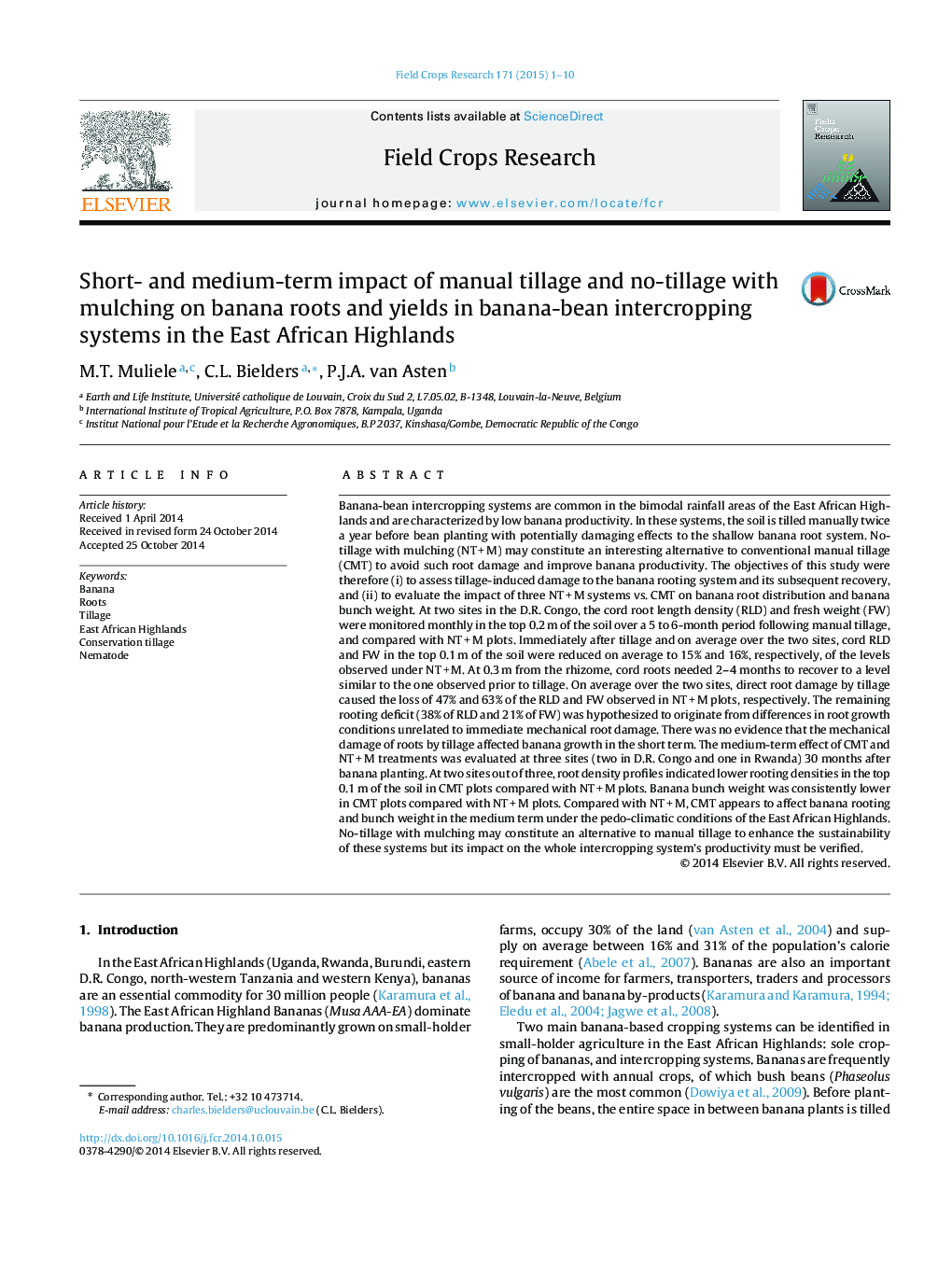| Article ID | Journal | Published Year | Pages | File Type |
|---|---|---|---|---|
| 6374936 | Field Crops Research | 2015 | 10 Pages |
Abstract
Banana-bean intercropping systems are common in the bimodal rainfall areas of the East African Highlands and are characterized by low banana productivity. In these systems, the soil is tilled manually twice a year before bean planting with potentially damaging effects to the shallow banana root system. No-tillage with mulching (NTÂ +Â M) may constitute an interesting alternative to conventional manual tillage (CMT) to avoid such root damage and improve banana productivity. The objectives of this study were therefore (i) to assess tillage-induced damage to the banana rooting system and its subsequent recovery, and (ii) to evaluate the impact of three NTÂ +Â M systems vs. CMT on banana root distribution and banana bunch weight. At two sites in the D.R. Congo, the cord root length density (RLD) and fresh weight (FW) were monitored monthly in the top 0.2Â m of the soil over a 5 to 6-month period following manual tillage, and compared with NTÂ +Â M plots. Immediately after tillage and on average over the two sites, cord RLD and FW in the top 0.1Â m of the soil were reduced on average to 15% and 16%, respectively, of the levels observed under NTÂ +Â M. At 0.3Â m from the rhizome, cord roots needed 2-4 months to recover to a level similar to the one observed prior to tillage. On average over the two sites, direct root damage by tillage caused the loss of 47% and 63% of the RLD and FW observed in NTÂ +Â M plots, respectively. The remaining rooting deficit (38% of RLD and 21% of FW) was hypothesized to originate from differences in root growth conditions unrelated to immediate mechanical root damage. There was no evidence that the mechanical damage of roots by tillage affected banana growth in the short term. The medium-term effect of CMT and NTÂ +Â M treatments was evaluated at three sites (two in D.R. Congo and one in Rwanda) 30 months after banana planting. At two sites out of three, root density profiles indicated lower rooting densities in the top 0.1Â m of the soil in CMT plots compared with NTÂ +Â M plots. Banana bunch weight was consistently lower in CMT plots compared with NTÂ +Â M plots. Compared with NTÂ +Â M, CMT appears to affect banana rooting and bunch weight in the medium term under the pedo-climatic conditions of the East African Highlands. No-tillage with mulching may constitute an alternative to manual tillage to enhance the sustainability of these systems but its impact on the whole intercropping system's productivity must be verified.
Related Topics
Life Sciences
Agricultural and Biological Sciences
Agronomy and Crop Science
Authors
M.T. Muliele, C.L. Bielders, P.J.A. van Asten,
